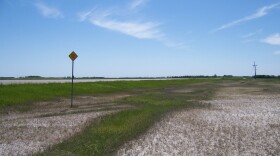I recently heard a sermon in which the preacher reflected on his observing a pileated woodpecker and the beauty of the natural world. For him, it was a spiritual experience. It led me to muse about the importance of experiencing nature in our spirituality and overall wellbeing.
Finding spirituality in nature is not new. For example, John Muir, the noted naturalist, preservationist, and author from the late 1800s and early 1900s found God in nature and referred to nature, particularly the Yosemite Valley as his cathedral. “No wonder the hills and groves were God’s first temples, and the more they are cut down and hewn into cathedrals and churches, the farther off and dimmer seems the Lord himself.”
Aldo Leopold, the father of modern wildlife management wrote about the importance of nature, specifically wild places. The first two sentences in the foreword to his widely read A Sand County Almanac, Leopold wrote “There are some who can live without wild places, and some who cannot. These essays are the delights and dilemmas of one who cannot.”
It is becoming increasing evident that nature and wild places are more important to us than many of us realize. Richard Louv’s book Last Child in the Woods: Saving Our Children From Nature-Deficit Disorder gained national attention in 2008. The book addresses issues relating to children these days having a lack of experiences with the natural world.
Since its publication, a child’s lack of experiencing nature has been found to be associated with a number of things, including attention difficulties, decreased emotional and physical wellbeing, reduced use of their senses, and a weakened literacy and stewardship of the natural world.
And more recently, Tony Jones’ book The God of Wild Places: Rediscovering the Divine in the Untamed Outdoors (2024), an autobiographical journey from the church to the woods, is generating some interesting discussion about the relationship between faith and the natural world.
We need an occasional reminder of the importance of nature and wild places in our lives, and spending more time in natural or wild places may be beneficial to many.
—
Further Reading:
- Muir, John. 1982. The Wilderness World of John Muir. Mariner Books.
- Leopold, Aldo. 1966. A Sand County Almanac with Essays on Conservation from Round River. Oxford University Press.
- Louv, Richard. 2008. Last Child in the Woods: Saving Our Children from Nature-Deficit Disorder. Little, Brown and Company.
- Jones, Tony. 2024. The God of Wild Places: Rediscovering the Divine in the Untamed Outdoors. Rowman & Littlefield.
- What is Nature-Deficit Disorder? (Richard Louv)





